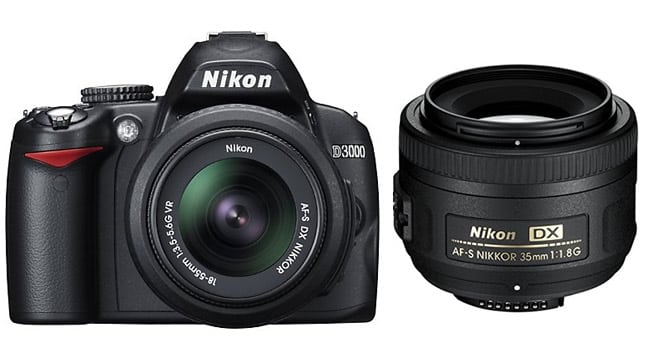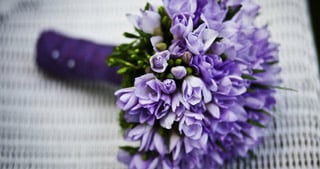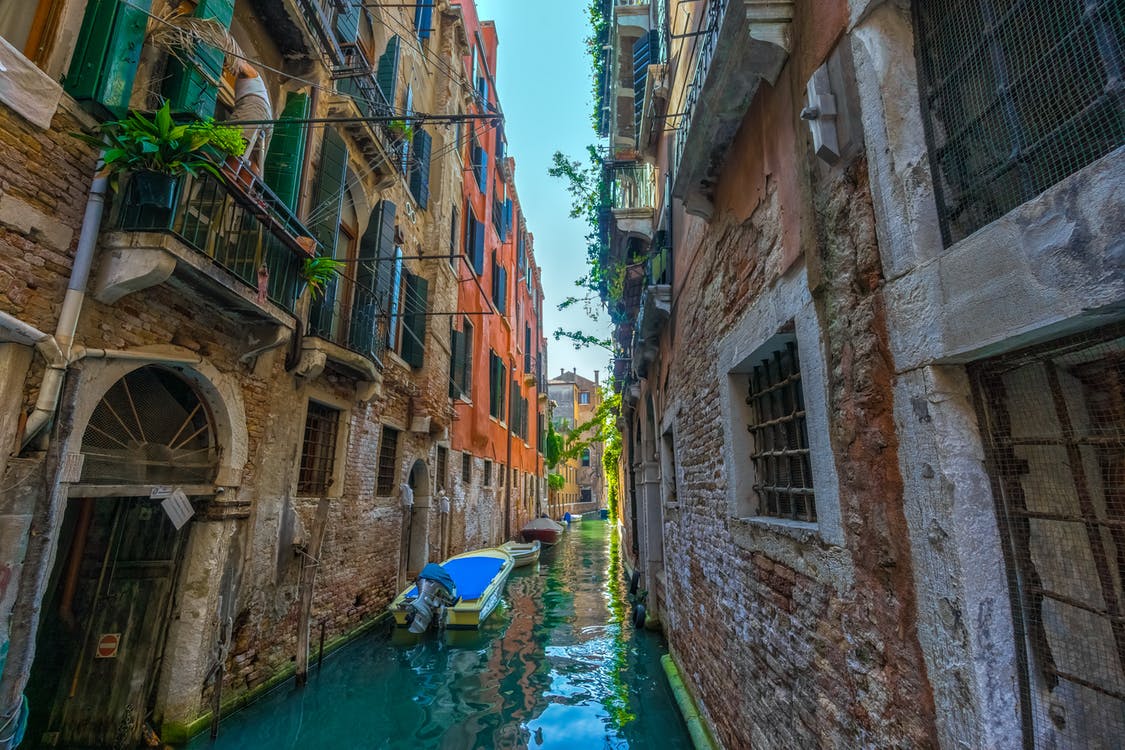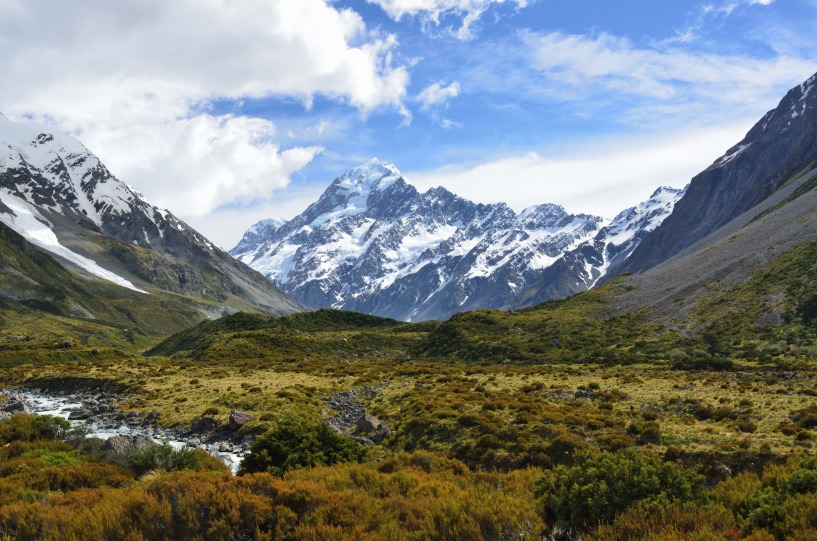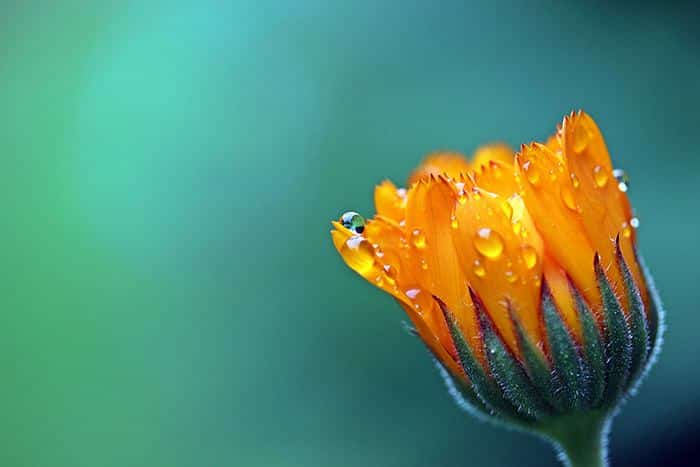Are you trying to find what lenses are compatible with your Nikon D3000? There are so many different Nikon D3000 lenses it’s easy to get lost if you don’t know what to look for, or what really matters. In this guide, we’ll show you how to select the best lens for the Nikon D3000 and give you all the information you’ve been looking for.
Table of Contents
ToggleList of Nikon D3000 lenses we recommend to buy:
We cover these lenses in depth below, but in case you’re looking for full specifications and reviews, here’s an organized list. Prime and zoom lenses, from widest to longest.
If you decide to buy anything through our Amazon links, you automatically support our work as we receive a small commission and it’s what allows us to write these guides.
Nikon D3000 lenses for Portrait/Wedding/Low Light:
Nikon D3000 lenses for Wildlife Telephoto/Action:
Nikon D3000 lenses for Walkaround/All-around:
Nikon D3000 lenses for Wide-angle and Macro:
The Nikon D3000 accepts both DX and FX lenses. However, it doesn’t have an AF motor built-in so you need to make sure the lens you’re thinking of buying has DX in its name. It’s quite hard to find a lens without a motor in this age, but it doesn’t hurt to know. We made sure all lenses on this list have one built-in so there’s no need to worry.
How to tell if a lens is compatible and will fit the D3000?
Nikon -> If there’s “DX” in the name, it’s good
Sigma -> “DC” stands for crop cameras, which the D3000 is.
Tokina -> Also uses “DX” in their names
Tamron -> “Di-II” made for only crop cameras, “Di” works on all Nikon DSLRs
You can also ask us directly if you’re still confused after reading this lens guide.
Good image quality = Good Lenses
Even though the Nikon D3000 is not the latest and greatest, it’s still better to spend your money on a new, quality lens compared to buying a newer entry level DSLR.
With over 60+ Nikon lenses to choose from, and that includes wideadngle, macro, telephoto lenses and much more, you have so much freedom and different choices it’s easy to get lost if you don’t know what you should pay attention to. There are also third-party companies such as Sigma and Tamron that make awesome D3000 lenses!
Here’s what you’ll know after reading our guide:
- What lenses fit on the D3000 and how to tell
- Best D3000 lenses for most common types of photography
- What to look for in every category

Wideangle lenses

Macro lenses

Telephoto lenses

Standard lenses
Types of Lenses:
- Wideangle – Useful for capturing a lot in your scene (usually from 8 to 35mm)
- Standard – Where most photography happens (from 35 to 85mm)
- Telephoto – For subjects far away (85 to 600mm, only a few lenses that go higher)
- Macro – 1:1 ratio that magnifies your subject to real life size (usually from 60 to 180mm)
Wideangle lenses are often used for nature, landscape and indoor photography.
A standard lens is the most similar to how we see the world, and is perfect for most types of photography. Our favorite pick is the Nikon 35mm f/1.8G and if you’re looking for sharpness and good image quality, plus being able to shoot at night, you’ll love it.
Telephoto lenses are longer and often heavier because they need to make your subject appear much closer than it actually is. Sometimes moving closer does the job, but there are occasions where you need a telephoto lens; you can’t just hop on a basketball court for a few seconds to take a few pictures, let alone outside in nature with dangerous animals. An affordable and lightweight option is the Nikon 55-250mm f/4-5.6.
The last on our list are macro lenses. They act like a magnifying glass and make your subject appear as big as it is in real life (known as 1:1 magnification ratio). They’re perfect for details, bugs and product photography, especially smaller items. Nikon recently announced the Nikon 40mm f/2.8G Micro and you’ll find it on all of our lens guides.
- Zoom lenses – Focal length can be changed
- Prime lenses – Same focal length
Simply put, a zoom lens allows you to get closer to your subject by rotating the zoom ring (like a 55-300mm that goes from 55mm, everything between, and 300mm).
A prime lens on the other hand is always at the same focal length (for example, 50mm). Quality is usually better and the maximum aperture can be bigger without making the lens huge in size.

Best Nikon Lenses for Portraits, Weddings, Low Light and General Photography

Best for everything and cheap -> Nikon 35mm f/1.8G AF-S
Best all-around and also cheap -> Nikon 50mm f/1.8G AF-S
Best for portraits and sharpest -> Nikon 85mm f/1.8G AF-S
For best image quality, sharpness and low light performance, prime lenses are by far the best choice. They have less elements than zoom lenses, which allows the optical quality to be better, and this also results in lighter and more compact designs.
There’s also the large aperture that lets in a ton of light so you can shoot at night, and it also makes your background really blurry, giving you that professional look.
Nikon 35mm f/1.8G AF-S DX
The Nikon 35mm f/1.8G is the most affordable Nikon prime lens, offers superb image quality and fast auto focus. If you’re looking to buy your first lens after the kit 18-55mm, you’ll be amazed by the quality as prime lenses are top notch!
Plus, aperture f/1.8 will make your portrait shots look more professional due to the shallow depth of field and lovely bokeh. Colors and sharpness are also really good for a lens this price. It’s a perfect choice for a whole lot of different styles, from night time, portraits, kids and pets running, nature to traveling and wedding photography.
You can buy it at Amazon or see more reviews here.
Pros
- most afordable Nikon prime
- superb image quality
Cons
- 35 mm lenses distort portraits a little bit
| Key Lens Specs for the Nikon AF-S DX Nikkor 35mm F1.8G | |
| Lens Name | Nikon AF-S DX Nikkor 35mm F1.8G |
| Lens mount | Nikon F (DX) |
| Lens type | Prime lens |
| Maximum aperture | F1.8 |
| Image stabilization | No |
| Autofocus | Yes |
| Weight | 210 g (0.46 lb)^ |
| Length | 53 mm (2.07″)^ |
| Filter thread | 52 mm |
| Diaphragm blades | 7 |
| Min Focus | 0.30 m (11.81″) |
| Max magnification | 0.16× |
| Materials | Plastic barrel, metal mount |
| Price Range | $ | Least expensive price range for lenes |
| ^Better than Average, when compared to over 750 other lenses | |
Nikon 50mm f/1.8G AF-S
Before the announcement of the lens above, the Nikon 50mm f/1.8G was our favorite prime for both newcomers to photography and more advanced users looking for quality in a lightweight lens.
If you often find yourself using the 18-55mm lens more or less near 50mm, this lens was made for you. Not only is quality years ahead of the kit zoom, it also focuses faster and lets you go all the way to f/1.8! Their prices are almost identical, yet we recommend you to go with the 50mm if you prefer a little bit tighter shots (15mm difference between the two lenses).
You can buy it at Amazon or see more reviews here.
Pros
- quality lightweight lens
- fast f/1.8 aperture
- wonderfully sharp image
Cons
- 50mm doesn't give you a ton of reach
- some Chromatic aberration
| Key Lens Specs for the Nikon AF-S Nikkor 50mm F1.8G | |
| Lens Name | Nikon AF-S Nikkor 50mm F1.8G |
| Lens mount | Nikon F (FX) |
| Lens type | Prime lens |
| Maximum aperture | F1.8 |
| Image stabilization | No |
| Autofocus | Yes |
| Weight | 185 g (0.41 lb)^ |
| Length | 53 mm (2.07″)^ |
| Filter thread | 58 mm |
| Diaphragm blades | 7 |
| Min Focus | 0.45 m (17.72″) |
| Max magnification | 0.15× |
| Materials | |
| Price Range | $ | Least expensive price range for lenes |
| ^Better than Average, when compared to over 750 other lenses | |
Nikon 85mm f/1.8G AF-S
We’ll keep it simple. If you’re into wedding, concert, portrait or night time photography, check out the Nikon 85mm f/1.8G AF-S and you’ll never look back.
Why? It’s the focal length, there’s just something magical about 85mm for shots of people. Then there’s the awesome bokeh with fast f/1.8 aperture and sharp results. It’s more expensive but definitely worth it if you’re looking for that one lens to take your shots to the next level. Because it’s noticeably longer, it’s not as good for street, indoor and walk-around purposes, but is ideal if you can’t always be close to your subject.
You can buy it at Amazon or see more reviews here.
Pros
- fast f/1.8 aperture
- great focal range
- beautiful bokeh
- great in low light
- universally a high recommendation
Cons
- not as good for street or tight indoor photography
- 85mm may few a bit long for some shooters
- more expensive
| Key Lens Specs for the Nikon AF-S Nikkor 85mm F1.8G | |
| Lens Name | Nikon AF-S Nikkor 85mm F1.8G |
| Lens mount | Nikon F (FX) |
| Lens type | Prime lens |
| Maximum aperture | F1.8 |
| Image stabilization | No |
| Autofocus | Yes |
| Weight | 350 g (0.77 lb)^ |
| Length | 73 mm (2.87″)^ |
| Filter thread | 67 mm |
| Diaphragm blades | 7 |
| Min Focus | 0.80 m (31.5″) |
| Max magnification | 0.124× |
| Materials | |
| Price Range | $ | Less expensive than majority of lenes |
| ^Better than Average, when compared to over 750 other lenses | |
Best Nikon Lenses for Wildlife, Sports, Birds and Action Photography
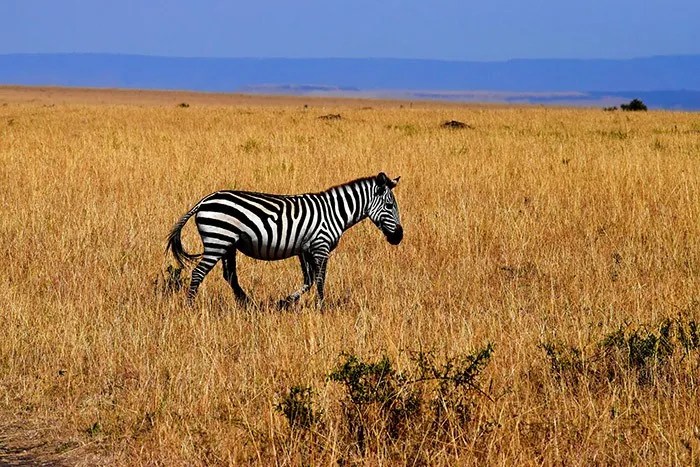
Best telephoto budget zoom -> Nikon 55-200mm f/4-5.6 ED II VR
More zoom, better optics -> Nikon 55-300mm f/4.5-5.6G ED VR
Nikon offers quite a few telephoto lenses for DX users and we really like their Nikon 55-200mm f/4-5.6G because it’s cheap and gets the job done. For less than $150, it even comes with Vibration Reduction, an ED element for improved sharpness and focuses normally on the D3000.
Because telephoto lenses tend to be a bit heavier and also get you close to the subject, you’ll want to make sure you get one with Vibration Reduction. Basically, if you’re not totally stable the lens compensates for slight movements and makes the shot less blurry, but this won’t help if your main subject is moving fast, only a faster shutter speed will.
Cheaper telephoto lenses also don’t have large apertures and are usually between f/4 and f/5.6. This is not good for indoor action so remember to raise the ISO up to 1,600 – 3,200 to get acceptable shots, mainly for viewing on an computer monitor.
Nikon 55-200mm f/4-5.6G ED VR II DX
The lens is so affordable you can even get it as a gift! The Nikon 55-200mm f/4-5.6G goes for $150, features VR and has a minimum focus distance of 3.7 feet. This is the perfect budget zoom lens for a Nikon D3000.
Its Vibration Reduction system helps you up to 4 stops, which can mean a difference between 1/250 and 1/15 in extreme cases. In short, the 55-200mm is perfect if you want to start wildlife and sports on a tight budget.
You can buy it at Amazon or see more reviews here.
Pros
- good option for a tight budget
- really nice focal range
Cons
- lacks the image quality of more expensive lenses
| Key Lens Specs for the Nikon AF-S DX Nikkor 55-200mm F4-5.6G VR II | |
| Lens Name | Nikon AF-S DX Nikkor 55-200mm F4-5.6G VR II |
| Lens mount | Nikon F (DX) |
| Lens type | Zoom lens |
| Maximum aperture | F4–5.6 |
| Image stabilization | Yes (vibration reduction up to 4 stops) |
| Autofocus | Yes |
| Weight | 300 g (0.66 lb)^ |
| Length | 83 mm (3.27″)^ |
| Filter thread | 52 mm |
| Diaphragm blades | 7 |
| Min Focus | 1.10 m (43.31″) |
| Max magnification | |
| Materials | Composite |
| Price Range | $ | Least expensive price range for lenes |
| ^Better than Average, when compared to over 750 other lenses | |
Nikon 55-300mm f/4.5-5.6G ED VR DX
 More money more problems. Well, not in this case. The Nikon 55-300mm f/4.5-5.6G does cost more, but offers better image quality, colors and contrast, and 100mm more zoom.
More money more problems. Well, not in this case. The Nikon 55-300mm f/4.5-5.6G does cost more, but offers better image quality, colors and contrast, and 100mm more zoom.
Bokeh also looks better due to 9 diaphragm blades compared to “just” 7 on the 200mm above, and it also focuses quicker and more silent. However, both lenses will often hunt in low light so be ready to do a bit of manual focusing from time to time. Outdoors, this is rarely an issue. Build quality has also been improved and feels a lot less cheap/plastic, but in return the lens weighs more.
You can buy it at Amazon or see more reviews here.
Pros
- better image quality and contrast
- 100mm more of zoom
- nice build quality
Cons
- weighs more
- aperture will slide at the extreme range
| Key Lens Specs for the Nikon AF-S DX Nikkor 55-300mm f/4.5-5.6G ED VR | |
| Lens Name | |
| Lens mount | Nikon F (DX) |
| Lens type | Zoom lens |
| Maximum aperture | F4.5–5.6 |
| Image stabilization | Yes (4 stops claimed) |
| Autofocus | Yes |
| Weight | 530 g (1.17 lb)^ |
| Length | 123 mm (4.84″) |
| Filter thread | 58 mm |
| Diaphragm blades | 9^ |
| Min Focus | 1.40 m (55.12″) |
| Max magnification | 0.28× |
| Materials | Plastic barrel, metal mount |
| Price Range | $$ | Less expensive than majority of lenes |
| ^Better than Average, when compared to over 750 other lenses | |
Best Nikon Lenses for Landscape, Wideangle, Architecture and Indoor Photography

Best wide zoom -> Tokina 11-16mm f/2.8 Pro DX II
Best but expensive -> Sigma 18-35mm f/1.8 DC HSM
The D3000 is a DX camera (1.5x crop factor) which means that any lens you put on acts as if it was 1.5x longer than it actually is (even FX lenses do that). This happens because the sensor is 1.5x smaller than full frame and is a standard for all DSLR cameras under $1,500. You can read more about the crop factor here.
How does this affect you? Well, with a D3000 telephoto photography is awesome with the 1.5x factor because you can get closer without buying more expensive lenses, but for wideangle this isn’t good because extreme wide angles become… not so extreme. You can try Nikon’s lens simulator to see the difference.
To counter the crop factor, Nikon and third-party companies make super wide lenses with the 1.5x in mind, so when you put them on they’re still wide enough for whatever it is that you require. They’re also cheaper and lighter than comparable FX lenses. The Tokina 11-16mm f/2.8 is our favorite affordable wideangle lens, because it’s still wide when mounted on the D3000 (11-16mm acts as if it’s a 16.5-24mm lens, just multiply the numbers by 1.5x). It’s also the only one we recommend because it offers the most for the money.
Tokina 11-16mm f/2.8 Pro DX II
It looks cool, it feels solid, it’s got an f/2.8 aperture and most importantly, gives good results for wideangle photography. The Tokina 11-16mm f/2.8 Pro DX II is a popular choice, mostly for Nikon because their wide zoom is more expensive and slower. No issues with auto focusing or anything since it uses an AF-S motor.
Not only is the lens good for nature, real estate and indoor photography, the f/2.8 also allows you to use it for long exposure photography at night. It features two aspheric and two low-dispersion elements to reduce the amount of ghosting and flare, a common issue with wider lenses.
You can buy it at Amazon or see more reviews here.
Pros
- f/2.8 aperture great for lowlight conditions
- great auto focus
Cons
- limited zoom range
| Key Lens Specs for the Tokina AT-X Pro 11-16mm f/2.8 DX II | |
| Lens Name | Tokina AT-X Pro 11-16mm f/2.8 DX II |
| Lens mount | Canon EF-S, Nikon F (DX), Sony/Minolta Alpha |
| Lens type | Zoom lens |
| Maximum aperture | F2.8 |
| Image stabilization | No |
| Autofocus | Yes |
| Weight | 560 g (1.23 lb)^ |
| Length | 89 mm (3.51″)^ |
| Filter thread | 77 mm |
| Diaphragm blades | 9^ |
| Min Focus | 0.30 m (11.81″) |
| Max magnification | |
| Materials | |
| Price Range | $$ | Less expensive than majority of lenes |
| ^Better than Average, when compared to over 750 other lenses | |
Best Nikon Lenses for Traveling, Walkaround, Zoom and Everyday Photography

Best 1 all-around choice -> Sigma 18-300mm f/3.5-6.3 DC OS HSM
Better quality, less zoom -> Sigma 30mm f/1.4 DC HSM
While there’s so many lenses to choose from, you might prefer owning just one that covers it all, from wide to telephoto. This usually means bigger and heavier lenses, but is usually still better than carrying around at least 3 lenses and switching between them. When traveling, you might not always have the time, and you can also risk getting your gear wet/dusty.
But there’s one drawback; the quality of do it all zoom lenses is not as good as primes. We’re not saying they suck or anything, but their apertures are nowhere near as big and quality differences can be seen when viewing bigger prints. A zoom lens needs to have so many different elements inside, even for moving, that you can’t expect to get the highest quality.
However, we found a lens that simply tops every other Nikon all-around lens! That’s the Sigma 18-300mm f/3.5-6.3 DC OS HSM. Check out the ePhotozine review that also for more detailed charts, but to give it to you short, the lens is worth every dollar.
Sigma 18-300mm f/3.5-6.3 DC OS HSM

Continuing from above, the Sigma 18-300mm f/3.5-5.6 DC OS HSM is the perfect travel lens. Take it out for walks, or use it as your only lens when travelling all over the world, it’s made for it.
It does get softer at 300mm as expected, but stopping down to ~f/8 greatly improves sharpness. Unfortunately this means it’s not good indoors at ~300mm because you have to shoot with really long shutter speeds. This can be “fixed” by enabling the Optical Stabilization or using a higher ISO speed, but yeah….noise and all, you know. If only life was that easy. We used to really like Nikon’s 18-140mm lens, but for the same price you don’t nearly get as much value.
You can buy it at Amazon or see more reviews here.
Pros
- perfect travel lens
- better value than a Nikon 18-140mm
Cons
- softens at 300mm
- not great for indoors
| Key Lens Specs for the Sigma 18-300 F3.5-6.3 DC Macro OS HSM | C | |
| Lens Name | Sigma 18-300 F3.5-6.3 DC Macro OS HSM | C |
| Lens mount |
Canon EF-S, Nikon F (DX), Pentax KAF3, Sigma SA Bayonet, Sony/Minolta Alpha
|
| Lens type | Zoom lens |
| Maximum aperture | F3.5–6.3 |
| Image stabilization | Yes |
| Autofocus | Yes |
| Weight | |
| Length | |
| Filter thread | 72 mm |
| Diaphragm blades | |
| Min Focus | 0.39 m (15.35″) |
| Max magnification | 3× |
| Materials | |
| Price Range |
$$$ | Within price range for the majority of lenses
|
Sigma 30mm f/1.4 Art DC HSM
A walk around lens doesn’t always equal a long zoom. Sometimes, all you need is a small, fast prime with excellent optics. The Sigma 30mm f/1.4 has a field of view equivalent to 50mm on the D3000, which is an excellent length for day to day stuff, traveling and taking pictures when it gets dark.
Yes, you can’t zoom but in return you get amazing quality, better bokeh, a large f/1.4 aperture and tack sharp shots. Having a fixed lens also forces you to be more creative and you sort of already know what to expect, even before taking a shot. You start moving better, you think more, you take better pictures. Not to mention, you stand out less with a prime lens compared to a superzoom.
You can buy it at Amazon or see more reviews here.
Pros
- super fast prime
- lightweight
- tack sharp images
Cons
- no zoom may be a con to some
| Key Lens Specs for the Sigma 30mm F1.4 DC HSM Art | |
| Lens Name | Sigma 30mm F1.4 DC HSM Art |
| Lens mount | Canon EF-S, Nikon F (DX), Sigma SA Bayonet |
| Lens type | Prime lens |
| Maximum aperture | F1.4 |
| Image stabilization | No |
| Autofocus | Yes |
| Weight | 435 g (0.96 lb)^ |
| Length | 63 mm (2.49″)^ |
| Filter thread | 62 mm |
| Diaphragm blades | 9^ |
| Min Focus | 0.30 m (11.81″) |
| Max magnification | 0.15× |
| Materials | |
| Price Range | $$ | Less expensive than majority of lenes |
| ^Better than Average, when compared to over 750 other lenses | |
Best Nikon Lenses for Macro, Product and Bugs Photography

Best DX Micro Lens -> Nikon 40mm f/2.8G Micro
Cheap 100mm macro -> Tamron 90mm f/2.8 Di SP Macro
If you want to look at the world from another perspective, there’s no better way than to use a macro lens. Their glass magnifies the subject so it’s just as big as it is in real life (1:1). If you ever see a lens with ‘macro’ in its name, check the magnification ratio first, if it’s under 1 then it’s not a true macro.
When buying a macro lens for the Nikon D3000, there’s one thing you never have to worry about and that’s sharpness. We couldn’t find a single lens that would be bad here and that includes a ton of third-party options as well.
For bugs and live creatures, longer focal lengths are preferred so you don’t scare them away.
Nikon 40mm f/2.8G DX Micro
This macro lens is perfect if you’re not too serious about macro photography, but just want to shoot from time to time. That’s not to say you can’t use the Nikon 40mm f/2.8G Micro as your only lens of course, but it’s the price that makes is such a good deal.
For a macro lens, its focal length isn’t too long, which makes it better for product photography or even as a casual choice for outdoor activities. Forget the term macro and don’t the numbers limit your creativity.
You can buy it at Amazon or see more reviews here.
Pros
- fast f/1.8 aperture
- great focal range
- beautiful bokeh
Cons
- more expensive
| Key Lens Specs for the Nikon AF-S DX Micro Nikkor 40mm F2.8 | |
| Lens Name | Nikon AF-S DX Micro Nikkor 40mm F2.8 |
| Lens mount | Nikon F (DX) |
| Lens type | Prime lens |
| Maximum aperture | F2.8 |
| Image stabilization | No |
| Autofocus | Yes |
| Weight | 235 g (0.52 lb)^ |
| Length | 65 mm (2.54″)^ |
| Filter thread | 52 mm |
| Diaphragm blades | 7 |
| Min Focus | 0.16 m (6.42″) |
| Max magnification | 1× |
| Materials | Plastic barrel, metal mount |
| Price Range | $ | Least expensive price range for lenes |
| ^Better than Average, when compared to over 750 other lenses | |
Nikon D3000 Lens Prices and Mount Compatibility
| Lenses | Price | Designed for | Year |
| Sigma 30mm f/1.4 Art DC HSM | Amazon | DX | 2013 |
| Nikon 35mm f/1.8G AF-S DX | Amazon | DX | 2001 |
| Nikon 40mm f/2.8G DX Micro | Amazon | DX | 2011 |
| Nikon 50mm f/1.8G AF-S | Amazon | DX+FX | 2011 |
| Nikon 85mm f/1.8G AF-S | Amazon | DX+FX | 2012 |
| Tokina 11-16mm f/2.8 Pro DX II | Amazon | DX | 2012 |
| Sigma 18-300mm f/3.5-6.3 DC OS HSM | Amazon | DX | 2014 |
| Nikon 55-200mm f/4-5.6G DX ED VR | Amazon | DX | 2010 |
| Nikon 55-300mm f/4.5-5.6G DX ED VR | Amazon | DX | 2015 |
The Nikon D3000 works perfectly with both FX and DX lenses, we simply give you this information if you ever decide to upgrade and want to see whether the lenses will work on an FX body.
Which lens to buy first?

We like keeping things simple, so if you’re unsure what lens to buy first it all comes down to whether your current gear allows you to take pictures like you want.
These are the 4 most important factors to consider before buying a new lens:
- Better quality
- Better low light performance
- Wider or longer focal length
- Price
If you own the 18-55mm kit lens, there’s no reason to buy something new with just a little bit more zoom range and aperture speeds. However, if you’re looking for a drastic change in how much light you receive, the image quality and the background blur you can get, buying a Nikon 35mm f/1.8G AF-S is your best option.
You should get a lens when you want better performance at what you’re already shooting (sharpness, length, zoom, aperture etc.), or to start taking pictures that excite you but are hard to get with current equipment.
While the right lens is the most important thing to complement your camera, remember that the speed of your memory card is also extremely important. There are a lot of memory card brands out there so it can be a bit overwhelming to figure out which on is compatible with your camera.
If you need some help finding the right one check out our selection of the best photography accessories.
Still have Questions about the Best Lens to Buy?
If you’re a beginner photographer our sister site, Smashing Camera, also has a great guide on understanding What the Numbers on Lenses Mean. It breaks down the most important lens features and some of the terms or features you’ll come across. Moreover, it will help you decipher the ‘alphabet soup’ of terms you’ll run across.
However, if you’re still unsure of what to buy feel free to reach out to us for our specific recommendations. Just click through to our Buying Advice contact form.
Useful Nikon Lens Sites:
7 Tricks to Try On your Nikon D3000
Find the Perfect Nikon Lens
If you’re looking to narrow down the options based on a specific type of photography or if you’re trying to figure out what the best lenses are for a particular Nikon camera then check out our simplified guide to finding the best Nikon lenses by using our “5 star” selection system.
Related Articles
Best Nikon Lenses
Trying to find the best lens for your Nikon? Are you looking for the best compatible lenses for your specific...
Read MoreNikon Portrait Lenses FAQs
The Nikon D3000 accepts both DX and FX lenses. However, it doesn’t have an AF motor built-in so you need to make sure the lens you’re thinking of buying has DX in its name. It’s quite hard to find a lens without a motor in this age, but it doesn’t hurt to know.
Since the D300 is a DX camera (aka: Crop Sensor Camera) it can accept both DX and FX lenses (FX stands for full frame) so you don’t ever have to worry about a lens not fitting (physically).
There are however differing levels of compatibility. You can consult to Nikon’s Official Compatibility chart the to see what will work with all the different types of Nikon lens.
If you’re not familiar with Nikon’s F mount, that’s the reference to the physical attachment of the lens to the camera body. In addition to that, to determine the compatibility of a lens with your Nikon you would then look to see if it’s a DX lens or an FX lens, which refers to the size of the sensor in the camera.
The F mount is universal between both sensor types, meaning the lens can physically attach. Although DX lenses aren’t something we would normally recommend on a FX (full frame) camera. One reason is because of vignetting around the edge of the image.
Determining the lens type is a bit more challenging since lens names are a bit of an ‘alphabet soup.’ But once you understand the basics of lens terminology you’ll start feeling like a pro.
If you’re getting started in your photography career you may be wondering what the best Nikon lens for portraits is? Professional photographers use a variety of lenses.
If you speak with seasoned photographers, you’ll often hear that they prefer Prime lenses because they are fast and light. However, it’s really more about the style of photography someone is doing and what their preference is. There are many professionals that prefer to pack light and want to be able to react quickly to any situation so they might decide on a nice zoom lens.
Although it’s quite universal that professional photographers are going to use lenses with a wide maximum aperture (aka: a fast lens). This just gives a lot more freedom and quality when trying to balance out that exposure triangle.
So a professional might be willing to spend the extra money on a lens with a f/1.4 rather than a f/1.8. But for a hobbyist or someone just getting started the smaller aperture would be just fine.
One of the keys with wedding photography is flexibility. No matter how much you prepare you don’t know what’s going to happen on the bride’s big day. Plus, from event to event, the wedding venues and size of the crowds will change.
A zoom lens allows you to quickly capture a moment without changing lenses, thus being able to be prepared for everything, at any time.
Many people use prime lenses and we’re not saying they’re not good or anything, it’s just that unless you’re a little bit experienced, carrying only a prime may not be the best option when starting out. You might not know how to position yourself properly yet, you might not have the full confidence to move freely etc.
In reality, the best choice would be a combination of both; 2-3 good zooms and a couple of primes that you use when you want to get a specific look. This is not the most budget friendly way of course, so we recommend starting out with an all-around f/2.8 zoom.
- Verdict: Bring zoom lenses if you want to be as secure as possible. Many people use primes only, but most do that after shooting a few weddings, so they know what they need. Best case scenario, bring both types of lenses so you get awesome shots in every situation
To answer the question of ‘when should you buy a camera lens?’ you need to determine what criteria you would use to consider something as a necessity.
For some, necessity will revolve around cost. For example, ‘do I have extra money in my budget to purchase a new lens?’
For others, necessity will be determined by the use case for a new lens. A professional photographer might find a lot of uses for a long telephoto lens, where an avid photographer may only use it on one or two trips in their lifetime.
So common criteria you can use to judge whether it’s a good purchase or not are:
- Does the cost fit in my budget
- Use cases for a new lens
- Do I have good alternatives, such as renting a lens
- Added value of adding a new lens to your equipment (ROI)
- Emotional benefit/joy over time of purchasing a new lens
- New opportunities or creative avenues that it might open
After going through these criteria you should be able to quickly determine if you should just rent a lens or if you are ready to buy one. So the next question you’d ask is “How do I choose what lens to get?“
Here’s a list of the benefits of renting a camera lens
- Gives you a chance to try equipment out before purchasing
- Low-cost option to get the right gear for a particular situation
- May be more convenient that traveling with your own gear, since you could have the rental shipped to where you are going
- Expands your options for creativity
- Can give you more professional results, allowing you to charge more for your services
- Can save you money, storage space, and overhead from having to own certain equipment
- You can use the best and latest gear, as opposed to having to use the same purchased lens for many years
This sounds obvious but you should rent the camera lens that you ‘need.’ The tricky part is figuring out what lens you need.
First off, in determining what camera lens you should rent, is to determine which lenses will work for your camera.
For many that will just be narrowing or filtering your search results to the camera brand. Beyond that you need to make sure you’re aware of the type of lens mount you have on your camera. With more and more mirrorless cameras out there, if you have a DSLR you need to pay attention to the lens mount, not just the lens brand.
There are also great 3rd party lenses that can make for less expensive options, and often have as good or maybe better specs than the main brand lens.
Even for someone that knows a lot about lenses it can be hard to keep up with all the options and features, so be willing to ask questions. There are also a lot of lists people put together of lens recommendations for specific camera models. Our Lens Hub is a great resource for finding a lens for your camera based on photography type or a specific model.
First and foremost, I’m a husband and father. Then professionally I’m photographer, designer, blogger, and Esty store owner. My homebase is near the stunning Wasatch mountains in Utah but I love traveling with my family as part of our homeschooling journey. I also love teaching and helping out others. My faith is one of the biggest aspects of my life and brings be a consistent joy that I haven’t found in anything else. My main blog is BestPhotographyGear.com and I strive to make photography simple for anyone looking to learn or find gear for their individual needs. By nature, I like to study, research, and analyze things and I use that help provide the best advice and reviews I can.

